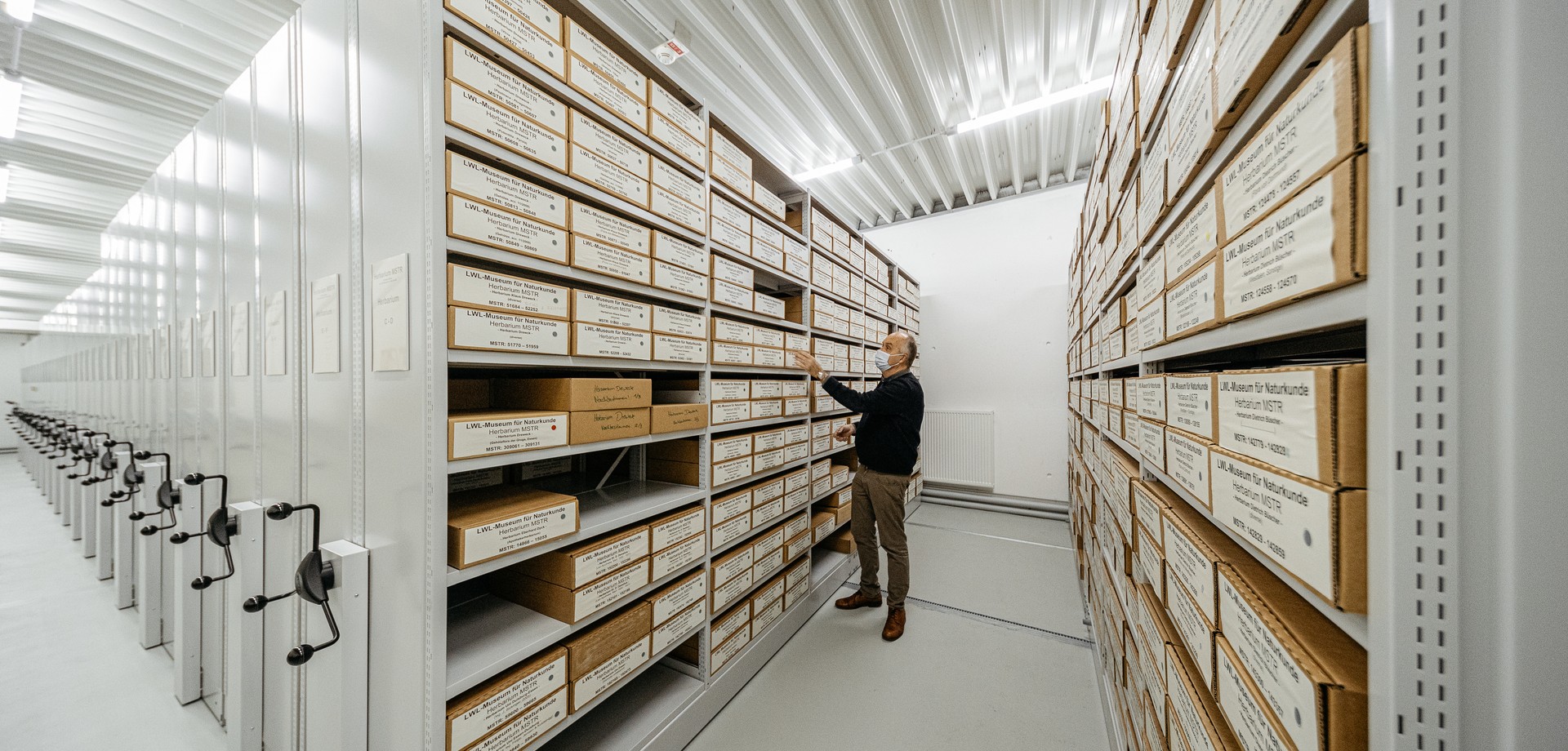
View into the herbarium. Photo: LWL / Steinweg None
Herbarium
The LWL-Museum of Natural History owns the biggest collection of botanicals in North-Rhine-Westphalia. The herbarium of the museum holds more than 550,000 individual objects.
Herbariums serve as archives. Plants that were dried and pressed are archived in it. Each object (plant or plant part) is attached to a page where the place and time of finding are noted down. The plants usually lose their natural color, but in an herbarium they can be preserved over a long time. All characteristics that are crucial for identification are maintained. Such plants are just as appropriate for classification as fresh plants and much better than drawings or pictures, therefore they are still used today for classification. The oldest specimens in Münster are over 250 years old.
In addition to approx. 420,000 fern and flowering plants, the herbarium also includes a moss collection (approx. 70,000 specimens), a lichen herbarium with approx. 30,000 specimens and an algae collection (approx. 2,500 specimens). Fungi, which occupy a special position in botany, are also part of the herbarium. So far, 24,000 finds have been recorded here and deposited in bags and boxes. Many mushroom finds have been freeze-dried, which has allowed them to retain their overall natural appearance.
The herbarium MSTR is used for numerous botanical-taxonomic but also historical-biographical and conservation studies. Without the evaluation of these herbarium specimens there would be, for example, no well-founded distribution atlases of plants in NRW and no good data basis for Red Lists of endangered species.


